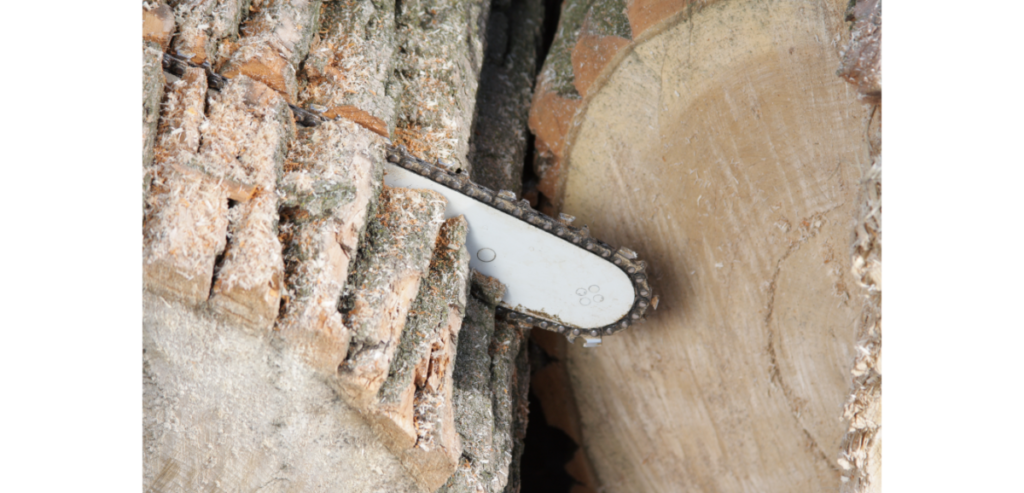
The chain is one of the most critical components of a chainsaw, yet it’s often overlooked when it comes to regular maintenance.
How does one perform maintenance on a chain?
The maintenance of a chainsaw chain is simple and is performed by keeping the chain sharp. A dull chain can really take a toll on a chainsaw, so you want to make sure your chain is sharp at all times.
How do you know when your chainsaw is dull and needs to be sharpened?
There are five key symptoms of a dull chainsaw chain:
- Chain produces saw dust instead of wood chips
- Chain seems to resist entering wood
- Chain pulls to one side during cut
- Chain smokes as if chainsaw is out of bar oil
- Chain cutter teeth appear blunted or rounded on edge
1. Chain Produces Saw Dust Instead Of Wood Chips
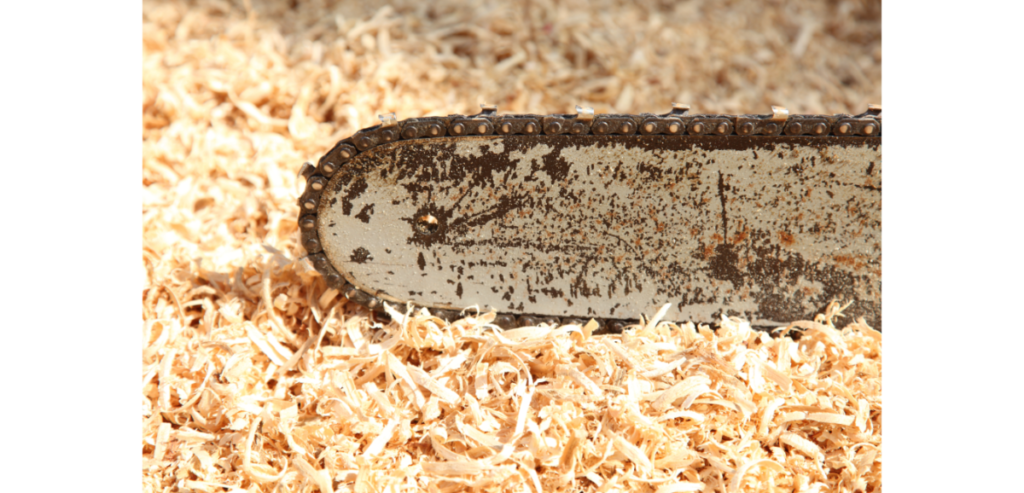
A sharp chain will produce wood chips and will feel like it is pulling itself into the wood. A dull chain will produce fine sawdust as it essentially grinds on the wood instead of cutting. If you see sawdust, it’s time to stop and either sharpen or replace your chain.
2. Chain Seems To Resist Entering Wood
A dull chain will not properly bite into the wood as it tries to cut. The chain will basically be grinding on the wood, creating a feeling of resistance to the wood.
Remember, a sharp chain will pull itself into the log or tree.
A dull chain will make you apply force in order to penetrate the wood. You never want to apply pressure to your chainsaw while cutting. If you have to apply pressure to make cutting progress, your chain is dull and needs to be sharpened or replaced. Using force on your chainsaw can be dangerous and may increase the chance of kickback.
3. Chain Pulls To One Side During Cut
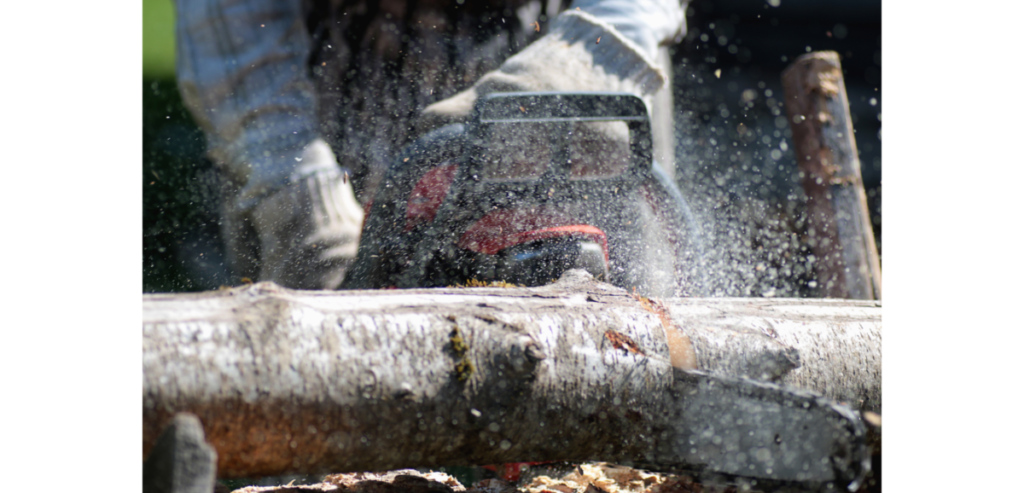
When a chainsaw chain pulls to one side as it makes its way through the wood, it means that your chain is dull on one side or improperly sharpened.
Sometimes the chain will almost cut a semi-arch to one side if it’s dull or sharpened incorrectly.
If your chain is pulling excessively in one direction or the other, it’s time to either sharpen your chain to 30 degrees on both sides or replace your chain.
4. Chain Smokes As If Chainsaw Is Out Of Bar Oil
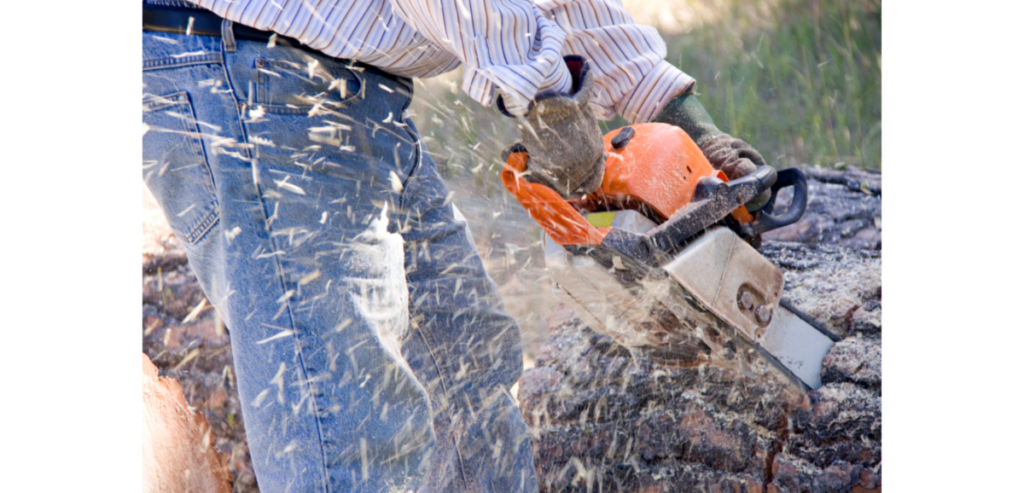
A smoking chainsaw chain is not something you want when operating your chainsaw.
If your chainsaw chain is smoking and you have bar oil in the chainsaw, you more than likely have a dull chain.
In some instances, the smoking could point to a failing sprocket on the chainsaw guide bar, but a dull chain is more common.
A dull chain will not be able to penetrate and remove woodchucks as it moves across the log. Instead, the chain acts almost like a grinder and causes friction as it skips across the wood. The chain’s friction will produce smoke as heat builds on the guide bar and chain.
Heat is to be avoided as much as possible when operating a chainsaw.
Keeping your chainsaw chain sharp will reduce chain and guide bar heat and add to the longevity of your chainsaw.
5. Chain Cutter Teeth Appear Blunted Or Rounded On Edge
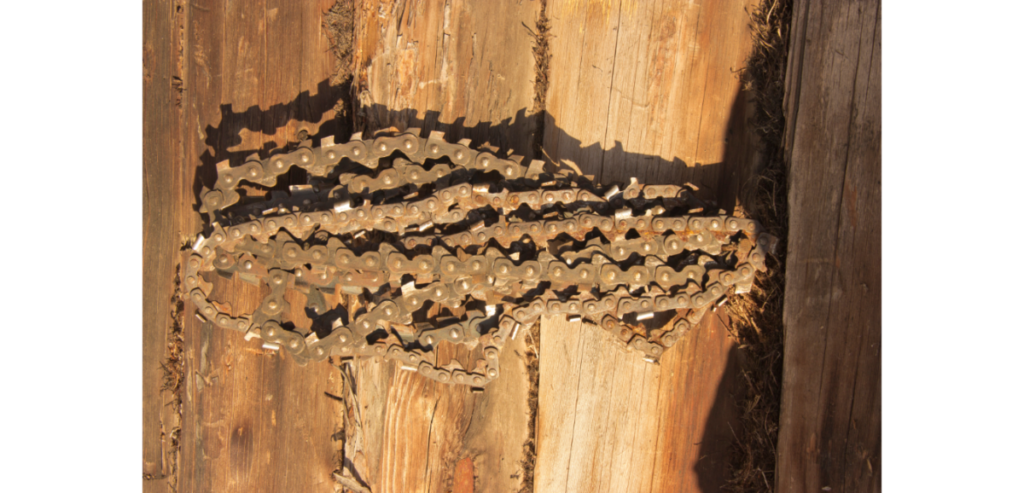
A visual inspection can tell you if your chainsaw’s chain is dull or sharp.
When inspecting your chainsaw chain, look to the cutter teeth’ edges.
The cutter teeth should have a sharp non-blunted edge.
If the edge of the cutter teeth has a blunted or rounded edge your chain is dull and needs to be sharpened or replaced.
How Do I Know When My Chainsaw Chain Needs Replacing?
Chainsaw chains can only be sharpened so many times before they need to be replaced.
The exact number of times a chainsaw chain can be sharpened before needing to be replaced depends on different factors like cutting environment and adequate lubrication, so an exact number can not be quoted.
However, you can definitely tell when a chainsaw chain needs to be replaced by examing the chain links and cutter teeth.
A chainsaw chain needs to be replaced if any of the following criteria are observed:
- Excess slack betweet chain links (chain will feel flimsy)
- Cutter teeth more than 75% gone
- Excessivly damaged cutter teeth (bent or broken)
- Burred or damaged drag links
If any of these listed criteria are met it is time to replace your chainsaw chain.
How Often Do You Need To Sharpen A Chainsaw Chain?
The frequency of sharpening a chainsaw chain depends on:
- Cleanliness of Wood
- Hardness of Wood
- Chain Touching Ground
- Chain Contacting Foreign Object
Cleanliness of Wood
Cutting dirty wood can rapidly dull a chain. Dirty wood equals dull chains.
What is dirty wood?
Dirty wood is what it sounds like. Wood that is coated in dirt, mud, or sand is considered dirty wood.
People tend to think of dirty wood as logs or trees that have been laying on the ground for an extended time and become covered in dirt.
While this is true, a standing tree can be considered dirty wood as well. This is especially true for barked trees like pine. Pines trees are known to grow in sandy environments and in some cases, have sand embedded in the bark of the tree that is not visible.
The environment of the tree has a massive impact on how clean a tree is, whether standing or felled.
Hardness of Wood
The hardness of certain woods can dull a chain quicker than cutting softer woods.
Examples of hardwoods that can dull a chainsaw chain quickly are Hedge Apple, Maple, Hickory Wood, White Oak, and Black Oak. In fact, you can sometimes see sparks fly when cutting black oak.
If you are cutting hardwood, expect to sharpen your chain more often than when cutting softer woods suck as pine.
Chain Touching Ground
Chainsaws chains are made of steel and are designed to cut clean wood.
A common occurrence when cutting felled trees is letting the chainsaw bar and chain penetrate through the tree and contact the ground.
When a chainsaw chain touches the ground, it will become dull in seconds.
The reason dirt dulls a chain so quickly is due to the microscopic makeup of the dirt. If you were to examine dirt under a microscope, you find that it’s made up of small rocks like granite, quartz, and other hard materials. The materials of dirt are often harder than the steel of the chainsaw chain and will win the battle when touched by a moving chain.
Keeping your chainsaw’s chain out of the ground will lead to having to sharpen your chainsaw chain less often.
Chain Contacting Foreign Object
A foreign object, like a nail embedded in the wood, can damage a chain in the blink of an eye.
Objects like nails and screws are commonly encountered in wood, especially in old trees around homes. Homeowners tend to hang things like swings and bird feeders in trees with nails. These nails are rarely removed and are forgotten about until they are hit by a chainsaw.
Sometimes hitting a foreign object is unavoidable. However, in most cases, a quick examination of the tree you’re cutting can save you time and money in sharpening or replacing chainsaw chains.
Always know what you are cutting and what might be embedded in it before you start working.
Why Does My Chainsaw Chain Dull So Quickly?
The reasons for chainsaw chains dulling quickly include:
- Cutting wood covered in dirt, mud or sand
- Cutting hardwoods like oak, maple, hedge apple and hickory
- Allowing chainsaw chain to impact soil
- Allowing chainsaw chain to impact hard non-wood material like a nail
How Do I Know If My Chainsaw Chain Is Blunt?
A chainsaw is worthless without a properly sharpened chain. Never use a dull chain or your chainsaw. Using a dull chain on your chainsaw can lead to excessive wear and tear on your chainsaw and be dangerous as well. Before operating your chainsaw, check to see if your chain is blunted or dull.
A blunted chainsaw chain will be evident by the following:
- Chain makes sawdust and not wood chips
- Chain not pulling chainsaw into wood
- Chain not cutting evenly and pulling to one side
- Chain smokes like there is no lubrication when there is
- Chain cutter tooth cutting corner appears dull or rounded
How To Fix A Chain That Will Not Cut
A chain that will not cut can usually be restored to cut properly.
In most cases, a dull chain is to blame, and the remedy is to sharpen the cutter teeth of the chain.
In other cases, the depth gauges of the chainsaw’s teeth are higher than the cutter teeth of the chain. When this occurs, the cutter teeth are not able to bite into the wood properly.
If the depth gauges are higher than the cutter teeth on your chain, in my opinion, it is best to replace the chain instead of trying to shorten the depth gauges.
If you attempt to shorten your chain’s depth gauges and do so improperly, you are risking injury or death. Improperly shortened depth gauges can cause extreme kickback of a chainsaw.
I always replace my chain instead of shortening a chain’s depth gauges.
Will Burnt Wood Dull My Chainsaw Chain?
Cutting burned wood with a chainsaw is more demanding than cutting non-burned wood.
The small particles and char can be extra abrasive on a chainsaws chain, guide bar, and sprocket.
The abrasiveness of burned wood can lead to a chainsaw chain dulling faster than normal.
Also of note, when cutting burned wood, you need to take extra time to clean your chainsaw thoroughly after every cutting. The air filter especially needs to be cleaned due to the fine particles of the burned wood clogging it.
Clean the air filter often when cutting burned wood.
Wrapping Up
Properly maintaining a chainsaw includes maintaining the chainsaw’s chain by keeping it sharp at all times. You never want to operate a chainsaw with a dull chain due to the excessive wear it places on other components of the chainsaw.
Remember, if you notice any of the five steps listed above, your chain is dull and needs to be sharpened or replaced.
Have a great day and happy cutting with a sharp chain!
